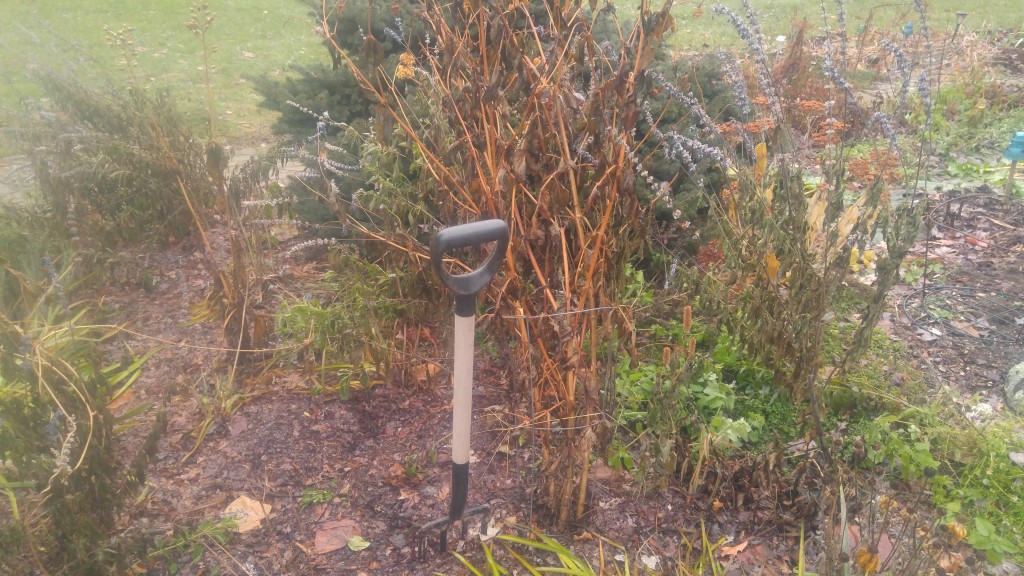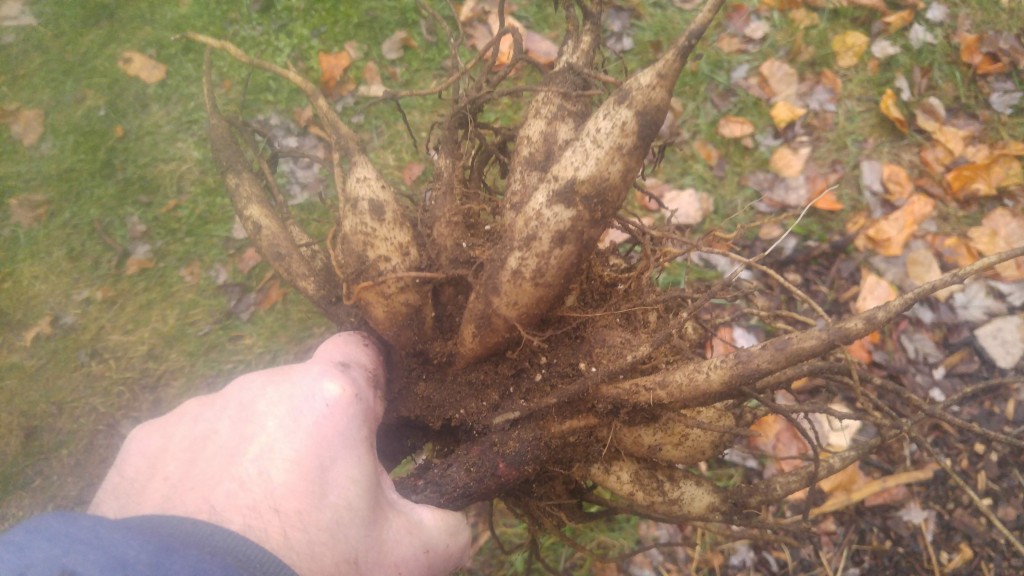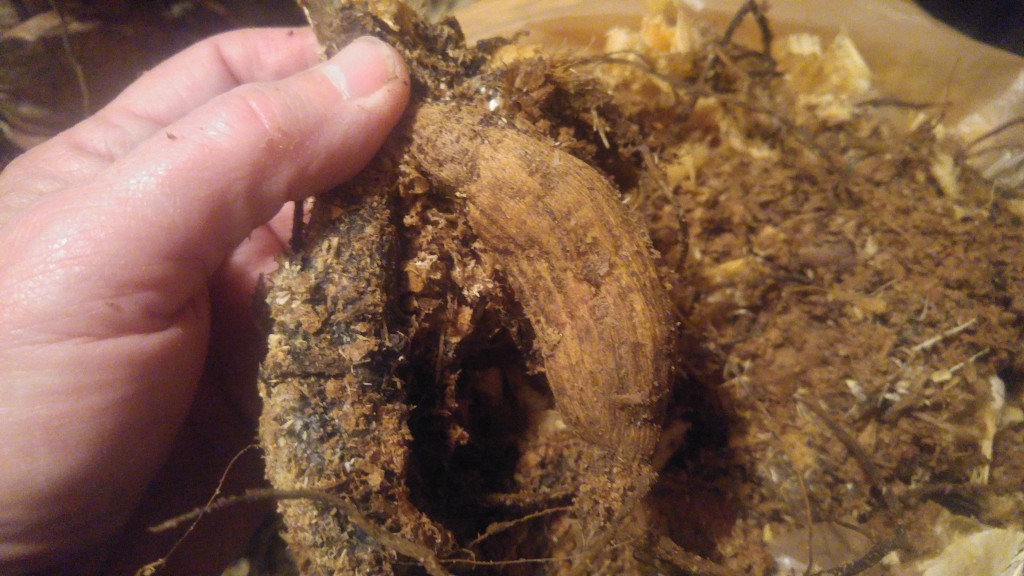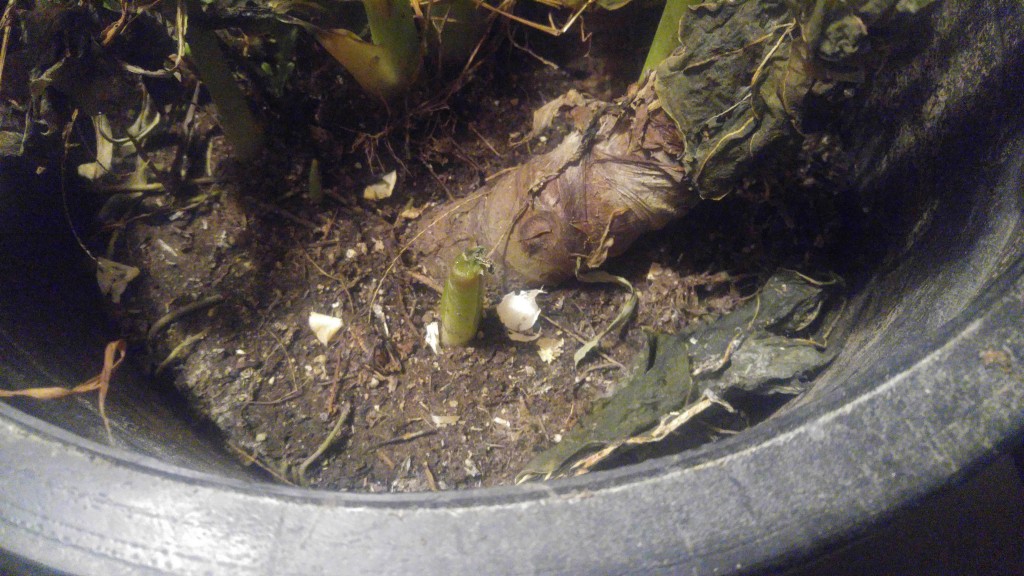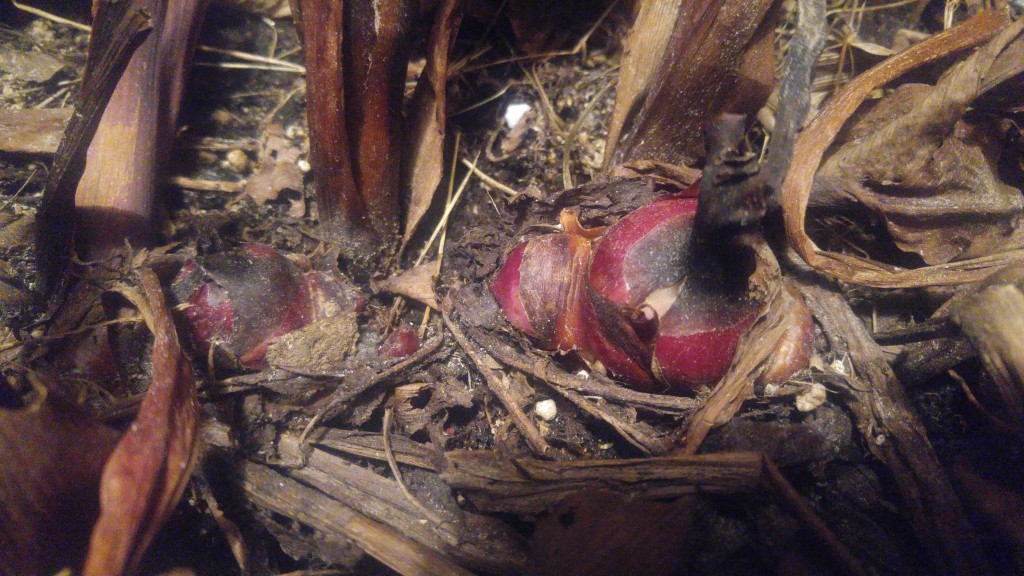The arctic blast we had in November caught a lot of us off guard. Temperatures at our house dipped down to nine above zero. Along with the cold air we got about eight or nine inches of snow.
It turns out the snow was actually a blessing in disguise. It was like a warm blanket to the plants in the landscape.
I was able to successfully dig the last of my dahlias just before Thanksgiving despite the mid-winter like conditions the week before. Soil temperatures were still fairly warm, the snow insulated the soil from the frigid air keeping it from being frozen.
I always leave my dahlia stalks intact until digging time. Dahlia stalks are hollow, if they’re cut off from the roots there’s a chance the stubs will collect water from rain and funnel it down to the tubers. The extra moisture leaves the tubers susceptible to rot. Leaving the stalks also makes them easier to find.
Generally, I like to keep my dahlia tubers in the ground as long as possible. They are one of those kinds of plants whose roots keep developing even after the tops have been killed by frost. The cold temperature stimulates “eyes” to form. The eyes are where next year’s growth will occur, much like a potato eye.
So now we’re in early December, soil temperatures are still above freezing, thanks to that first early snowfall and moderate late fall air temperatures.
It may not be too late to salvage dahlias that were left in your garden especially if your flower garden is in a well drained, protected area with a southern exposure. Those conditions make a micro-climate condition that will make it more likely your dahlias are still waiting for you to dig them. The soil temperature in my south facing garden was 42° F on December 4th. When you consider the ideal stage temperature for dahlias is around to 45 °F you can be pretty sure those dahlia tubers are still in fine shape and well developed.
The window of opportunity won’t last long though. Cold rains can drop the soil temperature quickly. And if we get a really cold snap without snow, it will definitely be all over.
There’s a wide range of opinions on how to store dahlia tubers. Some gardeners suggest washing the garden soil off of the roots others leave the soil on. Some like to divide the clumps into individual tubers before storing but storing whole clumps works too. Whole clumps sometimes get very tough during storage making them harder to separate in the spring, but that depends on the variety.
If you know the variety, label the tubers before you put them into storage.
As mentioned earlier, storage temperature around 40°F or a little higher is about right. The tubers must be packed in some kind of porous medium to regulate humidity. I’ve used sawdust, wood shavings, potting mix and peat moss in past years. Sawdust seemed to work the best. The fellow I learned about growing dahlias always said to pack your tubers in plastic vegetable bags. You’re basically trying to keep them like fresh vegetables for as long as possible without letting them rot.
Check them every 3 or 4 weeks for rotting or signs of shriveling. If it looks like they are drying out too quickly, add a small amount of moisture to the storage medium. The tubers and sawdust will continue to exchange moisture until they reach equilibrium. As the storage temperature changes, so must the humidity. It takes a little practice to determine what that moisture content looks like in your particular storage situation.
Bob
